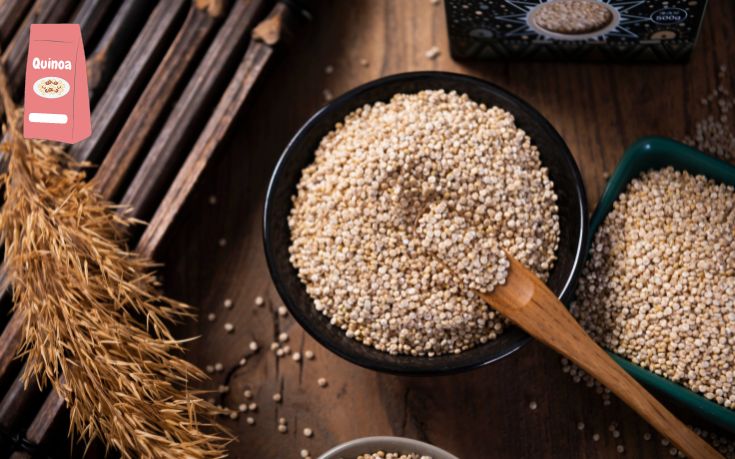Unlock the Secrets: Coconut Oil Benefits for Healthier, Stronger Hair
Coconut oil is available in every kitchen, but it’s better felt to be a secret to beauty and lovely hair. Its unique properties make . Coconut oil for hair is one of the finest natural treatments for almost all hair issues. This article covers in detail the many advantages that coconut oil has for your locks by providing you with an all-rounded guide on how best to incorporate natural wonder into your hair regime. Coconut Oil for Hair The coconut palm is a mature plant from whose kernel or meat coconut oil is derived. Traditionally, it was in use by many cultures from tropical regions where coconut trees were available. Its usage in hair care has increased over the past few years since this oil has several benefits that are both scientifically proven and personally testified. Deep Conditioning and Moisturizing This benefit can be said to be the most grandly celebrated: deep conditioning and moisturizing role on hair. Most commercial conditioners just sit on the external hair, but the case is different for coconut oil as it penetrates the hair shaft, offering essential moisture from within. Deep conditioning is related to reducing protein loss in your hair; hence, it makes one’s hair stronger and less prone to breakage. Encourages Hair Growth Hair growth is promoted by Coconut oil. The richness keeps the hair healthy from the roots down to the tips. Massage coconut oil into your scalp because it improves blood flow. With improved blood flow, there can be a healthy growth of the hair. Because of its antifungal and antibacterial properties, the good health of your scalp is maintained by it, keeping off infections that hamper the growth of the hair. Reduces Dandruff and Problems of the Scalp Dandruff is one of the most common problems that coconut oil can help control if used regularly. The antimicrobial nature of this oil fights the growth of fungi that cause dandruff. In addition to that, it also moisturizes the area of the scalp, easing dryness and flakiness. A healthy and well-moisturized scalp has fewer instances of dandruff and other related problems. Prevents Split Ends and Breakage The application of coconut oil, especially as a routine, will prevent split ends and breakage of hair. Coconut oil, as a penetrating oil, gets inside the hair shaft to supply the required moisture to strengthen the follicles, making them more resistant to damage. It smoothens the hair cuticle and reduces the friction between the hair strands during combing and styling, hence preventing breakage. Adds Shine and Softness Coconut oil enhances shine and softens hair. With its special molecular structure, it goes deep into the shaft of the hair and enhances it with deeper hydration, leaving it softer and shinier. Use coconut oil regularly to turn dull, lifeless locks into a vibrant, glossy mane. Protects Against Damage Coconut oil contains natural barriers against environmental adversities. Be it exposure to harsh sunlight, pollution, or even the usage of heat-styling tools, coconut oil will ensure that the hair is well-guarded against any type of damage. Its antioxidant properties enable it to counteract free radicals responsible for oxidative stress in the hair, thus keeping it healthy and strong. How to Use Coconut Oil for Hair Now, there are various methods for implementation regarding coconut oil hair applications. Some of the popular ways are given below: Pre-Wash Treatment One of the uses of coconut oil is as a pre-wash treatment to help protect hair from shampoo-related dryness and reduce protein loss. Slather generous amounts into your locks and scalp, then leave it on for at least 30 minutes before washing your hair like you normally do. Leave-In Conditioner It can work wonders on your hair as a leave-in conditioner to lock moisture in and keep it soft and manageable. Take some coconut oil after washing your hair. Massage it into your damp hair, with special attention to the ends. This nourishes your locks and prevents frizziness. Massage on Your Scalp Massaging coconut oil into the scalp enriches the blood flow, which provides stimulation for hair growth. Just warm a little coconut oil and gently massage it into your scalp using circular motions. Afterwards, let it sit for some hours or even overnight, then wash it with a mild shampoo. Embrace Coconut Oil for Hair: Natural Power Consequently, coconut oil is among the most versatile and naturally powerful hair treatment options for a myriad of problems. It deep conditions hair and increases its growth, reduce dandruff, and guards it against damage. Multifaceted benefits give the inclusion of coconut oil in your hair care routine to make your hair much healthier and stronger. Start using this natural power of coconut oil so that your hair may shine with health and vitality.










